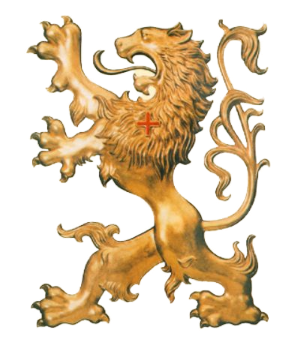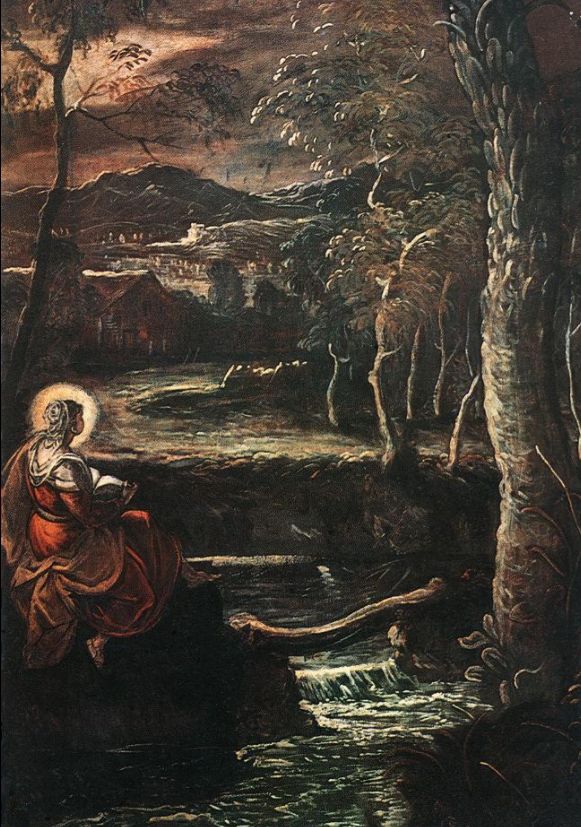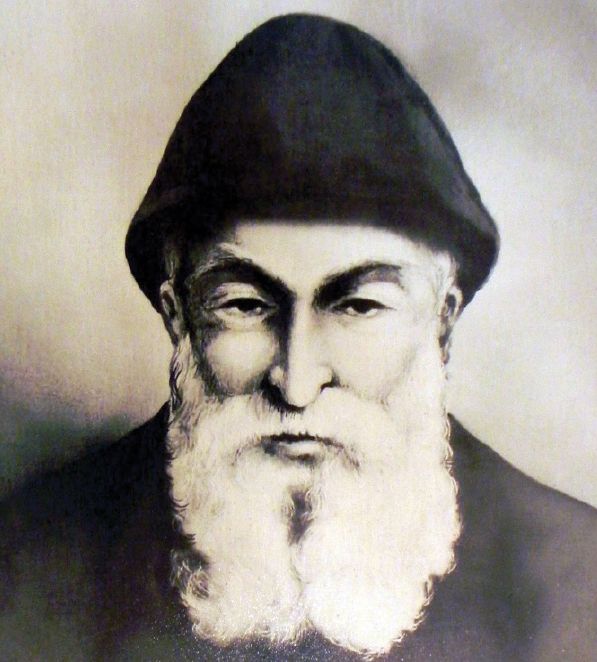|
Plinio Corrêa de Oliveira
The Story of St. Mary of Egypt, a Golden Page Within the Golden Legend
Saint of the Day, Friday, March 31, 1967 |
|
|
Today, March 31, is the feast of Blessed Bonaventure of Tornielli, Confessor, of the Order of the Servites of Mary. His relic is venerated in our chapel. It is also the novena of the Annunciation of Our Lady. Because of the first Saturday and the feast of the Annunciation, Dr. Paulinho has suggested that I comment on the St. Mary of Egypt today even though her feast is tomorrow. The document I have about her is from the Légende Dorée by Jaques de Voragine. Saint Mary of Egypt, also called the Sinner, led a life of repentance and deprivation in the desert for 47 years. She told her own story to Abbot Zozimus, who met with her one day. When the priest asked that strange figure of a woman, darkened and tanned by the sun, who she was and where she came from, she replied: “Father, forgive me, but if I reveal to you who I am, you will flee like at the sight of a serpent; your ears will be stained by my words, and the air will be fouled by my impurity. My name is Mary, and I was born in Egypt. I came from Alexandria at age 12 and lived there as a public woman for 17 years, selling myself to whoever wanted to. But one day, as some residents of that city were making a pilgrimage to worship the Holy Cross in Jerusalem, I asked the sailors to let me board as well. They asked me if I had money to pay for the ticket. I replied that I had no money, but I offered myself, and so the journey was made. But behold, in Jerusalem, as I presented myself with other pilgrims at the church door, I felt repelled by an invisible force that did not allow me to enter. I approached the doors twenty times. Anti-ecumenical doors for sure. “... twenty times, this invisible force held me back and prevented me from entering. All the others entered freely, without anything preventing them. Returning to the hostel, I understood that it was a consequence of my criminal life. I began to hurt myself, to shed bitter tears, to sigh from the depths of my heart. Then, seeing an image of the Blessed Virgin Mary on the wall, I begged her to obtain forgiveness for my sins and permission to enter the church to adore the Holy Cross. In return, I promised to renounce the world and live in chastity. “That prayer gave me confidence and I again presented myself at the doors of the church. This time, I was able to enter without any hindrance. And while I was piously adoring the Holy Cross, a stranger gave me three coins, with which I bought three loaves of bread. And I heard a voice saying, “Cross the Jordan and come to this desert,” where I have lived for 46 years without ever having seen a human, feeding on the three loaves I brought with me, which have become as hard as a stone but still suffice for my nourishment. As for my dresses, they have long been torn to shreds, and for the first seventeen years of my sojourn in the desert, I was plagued with temptations. But for the moment, through the grace of God, I have overcome them entirely. Here is my story, which I told you so that you would pray to God for me. Then the old man, prostrating himself on the ground, blessed the Lord in the person of his handmaid, who said to him, “Hear what I ask of you: on Easter Sunday, cross over the Jordan again, bringing with you a consecrated host. I will wait on the riverbank and receive the Body of the Lord from your hands, for I have not received communion since I arrived here. The old man returned to his monastery, and the following year, as Easter Sunday approached, he returned to [the river] Jordan taking with him a consecrated host. And behold, he noticed the woman standing on the other bank. And having made the sign of the Cross on the waters, she walked on them and came to the old man. Amazed, he wanted to prostrate himself at her feet humbly, but she said, “Father, beware of prostrating yourself before me, especially now that you bring the Body of Christ. But deign to return next year. The following year, Zozimus no longer found her on the riverbank. He crossed the river and headed for the place where he had first seen her. There, he saw her dead, lying on the sand. He wept bitterly and dared not touch her remains, fearing to offend her, for nothing covered them. But while he was thinking about how to bury her, he read an inscription on the sand: “Zozimus, bury my body; deliver my ashes to the earth, and ask the Lord for me; for I was delivered from the world on April 2.” So the old man, miraculously helped by a lion that appeared there, dug a grave for her. He later returned to his monastery, glorifying God.”
St. Mary of Egypt, by Tintoretto This is Légende Dorée through and through. It is one of those things about which it would be incomparably gauche to ask whether they are historical, because they are historical and because the world needs such things to have existed. And also because they really feed the soul without the need for historical inquiries or other such concerns, on account of their intrinsic beauty. You can analyze this story point by point. Look at the beautiful contrast established here between sin and penance. She was a terrible sinner who had lived in the worst of evils for 17 years. Suddenly, touched by the unpredictable ways of Providence, this woman suddenly arrives at the moment of conversion. There was a pilgrimage to Jerusalem, and she asked to go with the sailors, making the worst of possible offers. She goes, arrives at the church, and then she faces the notion of wide open, hideous sin, and [the doores] anti-ecumenically prevent her from appearing before thrice Holy God Who has a horror of sin. She tries to enter the church more than twenty times, and an invisible force prevents her from doing so. God, infinitely pure and infinitely holy, having a horror of sin, does not want the presence of a tainted sinner to defile His sanctuary. At the same time, however, God displays His grace and mercy. All this is profoundly theological. She goes back to the inn and begins to come to her senses in the solitude of her room. She thinks: “What have I done? Ah, my crime is my sin: tibi soli pecavi et pecatum meum, contra me est semper. I have sinned against thee alone, and my sin stands continually before me, accusing me. So I come to my senses, realizing the evil I’ve done. I have fallen so low that heaven cuts me off from the rest of creatures. And while the tabernacle doors are mercifully open to everyone, God rejects me. How low have I fallen!” You see how theological this is and how it explains the great repentance and penance that follow. However, things do not stop there. She begins to repent and, most providentially, sees an effigy of Our Lady in her room. Upon meeting the Mother of Mercy and the Gate of Heaven, she prays to the very person she had to beg to obtain mercy. Invited to extraordinary penance, she completely distances herself from society and leaves to do one of those most frightening penances. A frightening sin met a frightening warning. But that frightening this warning is an admirable and dazzling invitation to a frightening penance. She crosses the Jordan River and settles in a desert where she spends forty years without seeing anyone. Her sinful beauty vanishes in the sun. She is roasted, black, etched, hardened. Her clothes drop like rags. She continually prays to God in solitude filled with love for Him. At first, she had temptations, but later the temptations withdraw, and she keeps doing a penance more like a penance of innocence than a penance of sin. She has risen to such a high level of virtue that she is entirely forgiven. She begins to do penance no longer just for her but for all sinners. And before she died, God wanted her to receive this supreme proof of reconciliation: Communion. So it turns out that a holy man—those holy men of that time were white-bearded, wore a kind of long, pointed hood, all dressed in black, with a staff, walking in the desert, stopping, blessing something; seeing a crime, reprimanding for it; stopping before a tyrant and condemning him, stopping in front of a sick person and working a miracle, stopping in front of an icon and praying, and then continuing his journey alone.
I recommend that you read the admirable life of Blessed Charbel Mackluff, which is all made of this primitive, magnificent charm! The holy man comes to the other side of the desert and sees her. He asks who she was and she responds in the ceremonious and serious tone of that time: “Father, forgive me, but if I reveal to you who I am, you will flee like at the sight of a serpent; your ears will be stained by my words, and the air will be fouled by my impurity. My name is Mary, and I was born in Egypt.” This introduction to her biography has a grandeur and literary sense that shows the value of her great soul. It is something admirable, truly extraordinary. She is flying so high in God’s love that in order to receive communion, she walks on water. God has forgiven and forgotten everything and became all love for her. She lives with divine grace, the most intimate covenant that you can imagine. The following year the holy man returns, and she is not there. He crosses the Jordan and finds her body lying on the ground. She had written on the sand a recommendation that he bury her body. The pure man is squeamish about burying a woman covered in insufficient rags. But he modestly carries out the order. The king of the desert comes to the funeral of that kind of desert angel. It is highly poetic and architectonic for a lion to come. The lion dominates the desert and is the glory and brightness of the desert. He and the holy old man dig her grave. She is laid there and it is over. The only thing that remains is this story of Saint Mary of Egypt, an “only” that is a golden page within the Golden Legend. You can see how marvelous can be the narration of a great event or a great soul. Contrary to what they think and teach in our time, the fear of God leads us to the love of God You also see the beauty of contrition, something that our time is not quite aware of. Our time has a completely false idea in this regard. Our age has put into our heads that contrition comes exclusively from the fear of God and that the fear of God leads us away from the love of God. Hence, from a certain point of view, contrition is the opposite of God’s love. Nothing is more erroneous than that. First, because one has the true fear of God out of virtue, it is a gift of the Holy Ghost. And it cannot take us away from the love of God because nothing that proceeds from the Holy Ghost takes us away from God. On the contrary, it can only unite us to God. Therefore, whoever truly has the grace of an outside fear of God (a grace not given to all spiritual schools nor to everyone), finds in it a means of ascending to the love of God. And here we see how St. Mary of Egypt reached the height of love through repentance for her sins. True contrition is the fruit of love and intimately unites us with God Then there is another idea that contrition for sin is something that turns away from God because it is only done out of fear. That is not true. Attrition is caused by fear, which by the way, is a healthy feeling, but contrition is brought about by love. God’s love causes contrition. We can spend our whole life contrite for the sin we have committed, growing in contrition while at the same time also in love and sacred intimacy with God Our Lord. Imagine, for example, Saint Peter. Everyone says that even in his old age, Saint Peter wept for the sin he had committed, and that thick tears ran down his face in such a way that two furrows opened in his face. Why? It was undoubtedly the divine look he received from Our Lord, which certainly remained in his eyes all his life. And he grew in the love of Our Lord, in consideration of that gaze, to extremes that no one can imagine. Contrition increased his love and love increased contrition and intimacy with Our Lord. He, the Vicar of Christ, knowing Our Lady so closely, certainly had great spiritual intimacy with Our Lord. The Church is like a bright day that presents different colors throughout its various stages. These things intertwine, and this life of St. Mary of Egypt should not frighten us but make us ecstatic for the patriarchal and primitive figure of this great penitent. The Church is more or less like a bright day: the sun has its morning colors and different colors just about every hour of the day, and all these colors are beautiful. The Church has a color for every age of her life, and here is the color of the early Church. It is the coloring of great mortifications, great penances, great sins, great contritions, virginal innocence, exquisite austerity. It is the old sound of a bell that comes to us from the ancient past, reminding us exactly that old gravitas and seriousness of the early Church, so capable of exciting souls that truly seek to love Our Lady. Thus, it is refreshing for us to think of St. Mary of Egypt, and we must ask her to give us a true contrition for our sins, but contrition in peace, contrition without scruples or lacerations or bumps; truly holy contrition that brings our souls closer to Our Lady. |
|



